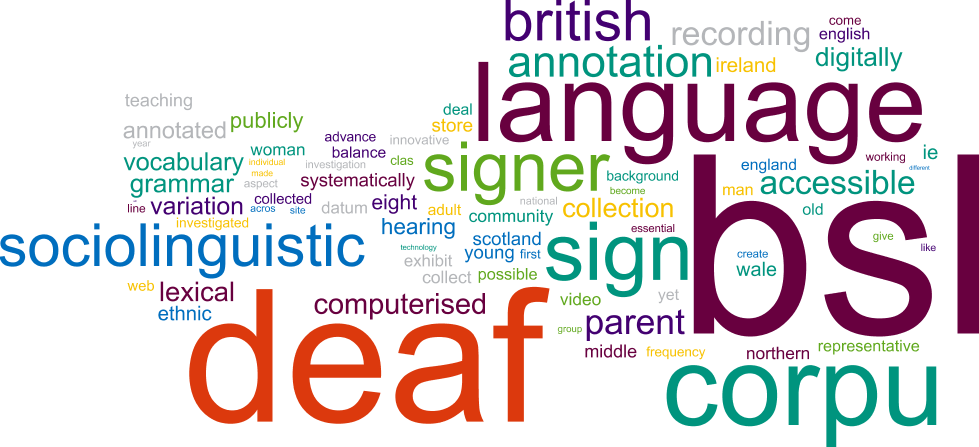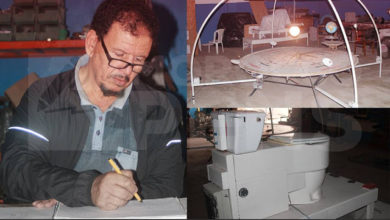
R’boul Hamza is presently pursuing Master program in “Teaching English as a Foreign Language” at the University of Ibn-Tofail in Kenitra. His research paper endeavors to critically scrutinize the interplay between Memory and Learning.
Kenitra, Morocco
Moroccan society has appreciably been characterized by a long tradition of multilingualism. The Moroccan context has been socially and linguistically diverse, and its cultural makeup is remarkably among the richest in North African countries. Morocco has consecutively been invaded by linguistically distinct civilizations that brought their respective languages to further intensify their hegemonies. More often than not, this concatenation of civilizations deeply shaped the Moroccan language policy and cultural diversity; therefore, the systematic consideration of the Moroccan sociolinguistic situation is likely to be difficult to achieve. This paper reviews five articles which appear to be representative of the past twenty-one years during which researchers and authors have primarily focused on the complex Moroccan sociolinguistic situation. Each article is described in chronological order and compared to research findings suggested by the other articles. It is noteworthy researchers have suggested some interesting associations with a visible degree of consistency among their findings.
Published in 2001, Jilali Saib’s “The Language Situation in Morocco” provides an accurate expounding of the general linguistic situation in Morocco as a multilingual country while criticizing the ideologically-based language policy by scrutinizing the underlying motifs and assumptions underpinning the decision-makers’ approach. Saib contends that irrespective of the cultural significance of Moroccan Arabic and Berber in the Moroccan sociolinguistic scene, they have knowingly been relegated to a lower status on the basis of political and ideological footings. Essentially, the author cogently professes the imperative of restricting the linguistic repertoire of Moroccans to only Moroccan Arabic and Berber. He further explicates his assertion by clarifying Berber and Moroccan Arabic are not the only varieties which native speakers have in Morocco but they have also clearly been marginalized.
Moreover, the inexact estimation of Berber population has considerably contributed to the minorization of the Berber language coupled with the total negligence of the sociolinguistic findings in the process of the formation of language policy and planning. He articulates: The reason was clearly political: the ethnocentric pan-Arabist political establishment, which has been repeating ad nauseam that Morocco is an Arab country and that Moroccans are Arabs, does not obviously want the Berbers to know how many they are, hence their demographic weight, for fear that they may demand a political power corresponding to it. (Saib, 2001: 430). Accordingly, Saib illustrates the sociolinguistic status of Berber and Moroccan Arabic is determined by purely ideological and political intents; hence, any linguistic repertoire to be cognized and agreed upon should be assented against four sociolinguistic parameters: standardization, vitality, historicity and autonomy.
The article, “From Monolingualism to Multilingualism: Recent Changes in Moroccan Language Policy”, was written by Professor Dawn Marley with the aim of investigating the factors contributing to realization of Moroccan language policy’s current frame of reference. In this article, Marley commenced by stating Moroccan society has principally been characterized by the fixation of Berber (Tamazight), Arabic, and French. During the twentieth century, Tamazight was regarded with disparagement, whereas Arabic was conceived as a clear manifestation of prestige .After independence, the Moroccan linguistic status sustained several changes summarized in the initiation of Arabization policy in the 1960s. Arabization was largely thought of as the endeavor of uniting the country and asserting the country’s Arabo-Islamic identity, and its cultural independence. However, Tamazight speakers were persistent in their demands for their linguistic rights. It was, thus, apparent the primary goals of Arabization were not achieved, and an immediate change was necessary. The Charter for Educational Reform (2000) signalized a drastic change in language policy. Article 110 asserts Morocco will be embracing a ‘clear, coherent and constant language policy within education’. This policy is concluded in three major points: ‘the reinforcement and improvement of Arabic teaching’, ‘diversification of languages for teaching science and technology’ and ‘openness to Tamazight’. The Charter has marked inchoate consideration and the opening up to Tamazight language by maintaining not all Moroccans are Arabic speakers, and their education could be greatly facilitated if their mother tongue language is utilized throughout the early years of learning. In addition, a study was conducted among students and their teachers to carefully determine the degree to which how well they thought they knew both French and Classical Arabic, and their attitudes towards them while teachers were questioned to express their views on aspects of the 2000 Charter.
“Le Champ langagier : Diversité et Stratification” is an article written by Ahmad Boukous in which he profoundly investigates the underlying constituents of Moroccan multilinguistic situation. The multilingualism in Morocco presents numerous challenges for the longevity of classical languages, such as Amazigh and Arabic. The Amazigh which has deep intrinsic roots in Moroccan culture runs the risk of becoming an obsolete language. Its cultural value has been recognized and now political dignitaries, cultural heads and the press are consciously engaging in injecting the language back into modern day society. The Arabic language which has long been in confrontation with the French language has a strong presence in the culture. Arabization has been made policy for the public sector, therefore weakening the French strong hold on the culture. The French language has dominated in Moroccan culture, due to the colonization of Morocco by France and due to the French being Morocco’s strongest and largest trading partners. The English language has also had an impact on the Moroccan culture. Anglophony is linguistically and culturally spreading due to English becoming the universal language and being introduced more into public and private institutions. Morocco will see the degeneration of the Amazigh and Arabic language due to globalization, the introduction of English as the universal language and the continual strong relational ties with the French. However, there is early recognition in the need to preserve these historical languages and help shift the countries linguistic development back to its sociocultural beginnings.
Interestingly, Dr. Rabia Redouane (2016) and Abderrahman Zouhir (2013) have both proffered perspicacious comments that are largely congruent. The authors exhibited an attempt to comprehensibly examine the intricate diversity and plurality of Moroccan language situation and intersection of various societal and sociolinguistic factors. Both papers intelligently provide a description of the language profile for each language in Morocco and examines the tension and conflict between languages. They also touch upon the broader repercussions of this discussion, which include the issue of languag policy.
Abderrahman Zouhir (2013) in his article “Language Situation and Conflict in Morocco” has indicated Moroccan linguistic complexity and conflict have recently become more prominent. He insisted this multilingualism leads us to question the nature of the coexistence of these languages and dialects, is it competitive coexistence? Or is it symbiotic coexistence, and what are its manifestations in Moroccan society? Abderrahman Zouhir (2013) has enriched the discussion by dissecting the language situation and conflict in the age of globalization. He mentioned the idea the emergence of English as a strong language paved the way to a drastic reduction of the space of French in education, and gradually diminishing the linguistic authority of Arabic and French in Morocco. Importantly, following the consideration of the findings proposed by the two articles, it is clear answers to questions related to the Moroccan sociolinguistic situation may differ depending on the nature of the relationships between these languages and the different approaches used to analyze them. Significantly, it would be remiss to deny the complex nature of the linguistic situation of Moroccan society while considering the thoughtful insights broached in the reviewed articles coupled with the truism of the rivalry and tension among languages.
By the same token, in her article “Linguistic Diversity or Linguistic Rivalry in Morocco? Realities and Perspectives”, Dr. Rabia Redouane (2016) has propounded Morocco is a country in which various languages exceptionally co-exist while maintaining these multiple languages are used for communication purposes and various sociorelational functions. The national languages are the classical Arabic language as the official language of the state, the Moroccan dialect with its various dialectical divisions, and the Tamazight with its three formations (Tarifit, Tamazight, Tashlhit). Also, the presence of foreign languages is quite meaningful in the Moroccan linguistic scene. Both French and Spanish were introduced during the French and Spanish occupation, while English contact with Morocco goes back to World War II. In her article, Dr. Rabia Redouane (2016) examined the rivalry between these languages and discussed the role and function of each language in the society and Moroccans’ position towards each language. First, Standard Arabic vs. French Rivalry is seen in the function of each language. Standard Arabic is regarded by the middle class as symbolic of Moroccan identity and cultural authenticity (Chadrani, 168), whereas the upper class recognizes French as the language of prestige and modernity and the key for success and development. Second, vis-à-vis the rivalry of Standard Arabic vs. Tamazight, the government acknowledges the existence of two national languages (MSA and Tamazight) that represent Morocco‘s national identity and that should have equal standing in the society.
Third, Standard Arabic vs. Moroccan Arabic, as there is ongoing debate on the need of adapting Moroccan Arabic in education instead of Standard Arabic. Fourth, French vs. English since many people have asked for supplanting French with English as a first foreign language.
Overall, irrespective of lacking accord or the existence of a certain degree of agreement between the reviewed articles, each of the theoretical positions exhibited in the articles has meaningfully contributed to our understanding of the complex nature of the Moroccan linguistic situation. The sentiment expressed in the six articles embodies the view the range of linguistic diversity in Morocco must be considered in correlation of the sociolinguistic of the state. It is important, however, not to assume the applicability of all authors’ observations and analysis in all cases. In this way, Moroccan sociolinguistic situation is emphatically multiplex and relatively unable to be accounted for sans serious studies and investigations, viz., a quintessential commentary on the Moroccan sociolinguistic situation would be one which takes into account the various insights of the different filed of enquiry.


